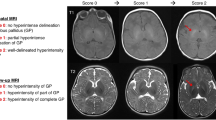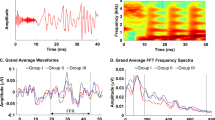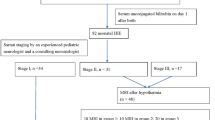Abstract
Objective:
The objective of this study was to determine if plasma unbound or ‘free’ bilirubin concentration (Bf) measured during the first 30 days of life is associated with subsequent abnormal hearing screening testing by automated auditory brainstem response (AABR) in a diverse population of newborns.
Study Design:
An observational study of newborns receiving AABR, plasma total bilirubin concentration (TBC) and Bf measurements and without underlying conditions known to affect hearing was conducted. Logistic regression was used to determine associations between abnormal AABR and Bf or TBC. The impacts of a variety of clinical factors on the regression model were also assessed.
Result:
A total of 191 patients with birth weights and gestations ranging from 406 to 4727 g and 24 to 42 weeks, respectively, were studied. Among them, 175 (92%) had normal (bilateral PASS) AABR and 16 had abnormal AABR (6 had unilateral REFER AABR, and 10 had bilateral REFER AABR). Mean TBC was not significantly different in babies with normal or abnormal AABR, but mean Bf was greater in the latter group (1.76 versus 0.93 μg per 100 ml, respectively, P=0.012). Bf, but not TBC, was associated with an abnormal AABR (Bf adjusted odds ratio 3.3, 95% CI 1.8 to 6.1). Comparing receiver-operating characteristics curves, the Bf/TBC ratio was a better predictor of an abnormal AABR than Bf alone. Intraventricular hemorrhage was the only confounding clinical variable.
Conclusion:
An abnormal AABR is associated with an elevated Bf or Bf/TBC ratio, but not the TBC alone. The prevalence of bilirubin neurotoxicity as a cause of audiological dysfunction may be underestimated if the TBC alone is used to assess the severity of newborn jaundice.
This is a preview of subscription content, access via your institution
Access options
Subscribe to this journal
Receive 12 print issues and online access
$259.00 per year
only $21.58 per issue
Buy this article
- Purchase on Springer Link
- Instant access to full article PDF
Prices may be subject to local taxes which are calculated during checkout

Similar content being viewed by others
References
Ahlfors CE, Parker AE . Unbound bilirubin is associated with abnormal automated auditory brainstem responses in jaundiced newborns. Pediatrics 2008; 121: 976–978.
Bergman I, Hirsch RP, Fria TJ, Shapiro SM, Holzman I, Painter MJ . Cause of hearing loss in the high-risk premature infant. J Pediatr 1985; 106: 95–101.
Salamy A, Eldredge L, Tooley WH . Neonatal status and hearing loss in high-risk infants. J Pediatr 1989; 114: 847–852.
Oh W, Tyson JE, Fanaroff AA, Vohr BR, Perritt R, Stoll BJ et al. Association between peak serum bilirubin and neurodevelopmental outcomes in extremely low birth weight infants. Pediatrics 2003; 112: 773–779.
Berg AL, Spitzer JB, Towers HM, Bartosiewicz C, Diamond BE . Newborn hearing screening in the NICU: profile of failed auditory brainstem response/passed otoacoustic emission. Pediatrics 2005; 116: 933–938.
Shimabuku R, Nakamura H . Total and unbound bilirubin determined using an automated peroxidase micromethod. Kobe J Med Sci 1982; 28: 91–104.
Ahlfors CE, Vreman HJ, Wong RJ, Bender GJ, Oh W, Morris BH et al. Effects of sample dilution, peroxidase concentration, and chloride ion on the measurement of unbound bilirubin in premature newborns. Clin Biochem 2007; 40: 261–267.
Ahlfors CE . Criteria for exchange transfusion in jaundiced newborns. Pediatrics 1994; 93: 488–494.
Hosmer DW, Lemeshow S . Wiley Series in Probability and Statistics: Applied Logistic Regression. Wiley: New York, NY, 1988.
Mehl AL, Thomas V . The Colorado newborn hearing screening project, 1992–1999: on the threshold of effective population-based universal newborn hearing screening. Pediatrics 2002; 109: e7.
Ritter DA, Kenny JD, Norton HJ, Rudolph AJ . A prospective study of free bilirubin and other risk factors in the development of kernicterus in premature infants. Pediatrics 1982; 69: 260–266.
Cashore WJ, Oh W . Unbound bilirubin and kernicterus in low-birth-weight infants. Pediatrics 1982; 69: 481–485.
Nakamura H, Yonetani M, Uetani Y, Funator M, Lee Y . Determination of serum unbound bilirubin for prediction of kernicterus in low birth weight infants. Acta Paediatr Jpn 1992; 34: 642–647.
Ahlfors CE, Herbsman O . Unbound bilirubin in a term newborn with kernicterus. Pediatrics 2003; 111: 1110–1112.
Newman TB, Liljestrand P, Jeremy RJ, Ferriero DM, Wu YW, Hudes ES, Jaundice and Infant Feeding Study Team. Outcomes among newborns with total serum bilirubin levels of 25 mg per deciliter or more. N Engl J Med 2006; 354: 1889–1900.
Chisin R, Perlman M, Sohmer H . Cochlear and brain stem responses in hearing loss following neonatal hyperbilirubinemia. Ann Otol Rhinol Laryngol 1979; 88: 352–357.
Wennberg RP, Ahlfors CE, Bickers R, McMurtry CA, Shetter JL . Abnormal auditory brainstem response in a newborn infant with hyperbilirubinemia: improvement with exchange transfusion. J Pediatr 1982; 100: 624–626.
Perlman M, Fainmesser P, Sohmer H, Tamari H, Wax Y, Pevsmer B . Auditory nerve-brainstem evoked responses in hyperbilirubinemic neonates. Pediatrics 1983; 72: 658–664.
Lenhardt ML, McArtor R, Bryant B . Effects of neonatal hyperbilirubinemia on the brainstem electric response. J Pediatr 1984; 104: 281–284.
Funato M, Tamai H, Shimada S, Nakamura H . Vigintiphobia, unbound bilirubin, and auditory brainstem responses. Pediatrics 1994; 93: 50–53.
Amin SB, Ahlfors C, Orlando MS, Dalzell LE, Merle KS, Guillet R . Bilirubin and serial auditory brainstem responses in premature infants. Pediatrics 2001; 107: 664–670.
Shapiro SM . Definition of the clinical spectrum of kernicterus and bilirubin-induced neurologic dysfunction (BIND). J Perinatol 2005; 25: 54–59.
Amin SB . Clinical assessment of bilirubin-induced neurotoxicity in premature infants. Semin Perinatol 2004; 28: 340–347.
Ip S, Chung M, Kulig J, O’Brien R, Sege R, Glicken S et al. An evidence-based review of important issues concerning neonatal hyperbilirubinemia. Pediatrics 2004; 114: e130–e153.
Acknowledgements
The research was in part supported by NIH K-23 DC 006229-03 (SB Amin).
Author information
Authors and Affiliations
Corresponding author
Rights and permissions
About this article
Cite this article
Ahlfors, C., Amin, S. & Parker, A. Unbound bilirubin predicts abnormal automated auditory brainstem response in a diverse newborn population. J Perinatol 29, 305–309 (2009). https://doi.org/10.1038/jp.2008.199
Received:
Revised:
Accepted:
Published:
Issue Date:
DOI: https://doi.org/10.1038/jp.2008.199
Keywords
This article is cited by
-
Effect of reduced versus usual lipid emulsion dosing on bilirubin neurotoxicity and neurodevelopmental impairment in extremely preterm infants: study protocol for a randomized controlled trial
BMC Pediatrics (2023)
-
The effect of different intravenous lipids on free bilirubin levels in premature infants
European Journal of Clinical Nutrition (2022)
-
History and current standard of postnatal management in hemolytic disease of the fetus and newborn
European Journal of Pediatrics (2022)
-
High levels of unbound bilirubin are associated with acute bilirubin encephalopathy in post-exchange transfusion neonates
Italian Journal of Pediatrics (2021)
-
High unbound bilirubin for age: a neurotoxin with major effects on the developing brain
Pediatric Research (2019)



